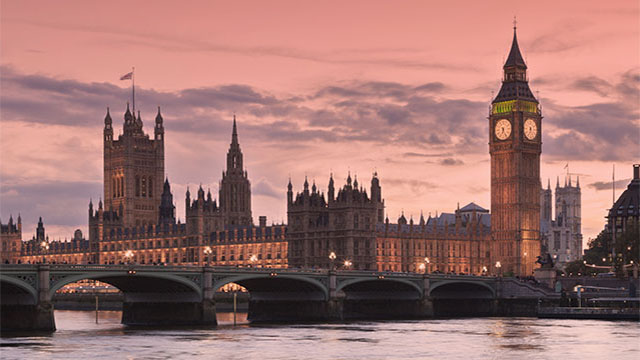Lauren Mills assesses the impact of new development planned for Scotland’s biggest retail market.
A cloud of uncertainty hangs over Glasgow’s retail market. Two major shopping schemes are planned, but no-one knows whether both will go ahead, just one, or neither.
At this stage, the 550,000-sq ft Buchanan Centre, at the top of Buchanan Street in the city centre, seems unlikely to proceed in the near future. The centre is being promoted by Grosvenor Square Properties and Bredero Properties, but Bredero’s future is unclear. Slough Estates’ offer to buy the beleaguered company has been extended to early July and, until this is settled, the Buchanan scheme is unable to proceed.
Bill O’Hara of Montagu Evans, joint letting agent with Healey & Baker, is frustrated by the delays. “Things are still very much up in the air,” he admits. But the Buchanan Centre has one major string to its bow: John Lewis is thought to want 280,000 sq ft once the centre is built.
Chesterton’s Bryan Duncan doubts that the scheme will get off the ground, although he admits that John Lewis would be a major coup. “If John Lewis says yes, then the scheme will happen.”
Local rumour suggests that John Lewis is losing interest, but O’Hara denies this: “John Lewis has been in a documented formal agreement for five years and there is nothing to suggest that it has lost interest.”
If the Buchanan scheme does get going, it will include space for another three anchor tenants, up to 70 unit shops and parking for at least 1,500 cars.
Slough Estates’ Roger Carey confirms that, if his company’s bid for Bredero Properties is successful, it intends to progress with the development. He expects to continue funding negotiations with AMP, which had already agreed terms with Bredero, although it is too early to say what would now be agreed.
O’Hara believes that the scheme would have a positive effect on the city centre. “It would consolidate the retail offer and make Glasgow a stronger shopping centre. The city has a catchment of about 2.5m people and John Lewis has massive drawing power.”
However, a 650,000-sq ft shopping centre, alongside 375,000 sq ft of retail warehousing at Braehead, 7 miles west of the city centre, poses a serious threat to the established shopping core.
But the future for this scheme is also uncertain. While Braehead Park Ltd, a joint venture between Sainsbury and Marks & Spencer, has detailed consent for the development, it is expected to submit a revised application scaling down the proposal.
Peter Campbell & Co’s Thomas Johnston, the scheme’s letting agent, is sure that the scheme – in some form – will proceed. “We hope to start building at the end of 1994.”
The combined force of M&S and Sainsbury adds weight to the Braehead proposal: M&S is to operate out of 120,000 sq ft and Sainsbury plans to occupy 130,000 sq ft. The two stores will be linked by a mall of up to 70 unit shops.
Duncan remains unconvinced: “I think that it will end up as a large retail park, not a shopping centre.” And he believes that the scheme needs to be closer to 1.5m sq ft to succeed: “At 650,000 sq ft it lacks the critical mass to draw people from Glasgow city centre.”
The city-centre market is remarkably strong, with Argyle Street and Buchanan Street battling for the prime position. Argyle Street is traditionally the best, although Buchanan Street is fast catching up.
Argyle Street is anchored by the city’s largest Marks & Spencer, together with the usual range of High-Street multiples. But Smith Newiss’ Dawn Mitchell is concerned that the street has been going downmarket. “There have been too many discounters and street sellers,” she complains. Nevertheless, she is confident that the worst is over: “In the next six months, Argyle Street will come back to life.”
She is encouraged by two recent lettings. Mothercare is taking two units at 87-91 Argyle Street and Woolworths is about to move back into the street after an absence of 15 years. It is taking 45,000 sq ft within Easter Morrison Partnership’s redevelopment of the former Arnotts department store, 167-201 Argyle Street.
The Arnotts scheme will provide eight shops, one of which is rumoured to be let to The Gap. Zone A rents are in excess of £110 per sq ft and Montagu Evans, Healey & Baker and John Britton Associates are the joint letting agents.
Tesco Metro is also moving into Argyle Street. It is about to open a store at nos 36-38. And, at Argyle Place on the corner of Stockwell Street and Osborne Street, Argos has taken a 25,000-sq ft unit. But this scheme is slightly off-pitch – two units remain empty despite quoting rents of only £55 zone A.
Mitchell points out: “In prime Argyle Street, rents are about £125 zone A. Argyle Place offers a big discount on rents, but the fact that two units remain vacant stresses the importance of location for retailers.”
Argyle Street is dominated by Glasgow’s first covered mall, the St Enoch Centre. Owned by Sears and the Church Commissioners, the 285,000-sq ft scheme, which was built about five years ago, struggles for full occupation.
Despite an impressive list of anchor stores, including Debenhams, BhS and Boots, zone A rents within the scheme have always been cheaper than in Argyle Street itself. But Duncan, whose firm lets and manages the centre, believes that St Enoch is gaining popularity. “St Enoch Centre is now beginning to rival Argyle Street. The zone A gap is closing, with the best rents just over £100 zone A,” he says.
While the St Enoch Centre has made its mark on Argyle Street, it caters for High-Street traders. For something different, shoppers must head into Buchanan Street, which has the reputation of being Glasgow’s up-market pitch.
This has, without doubt, been helped by Princes Square, Guardian Properties’ 70,000-sq ft scheme which opened in 1987. The scheme is successful, despite spreading across five levels and having no anchor. As Hamilton Glen’s Fiona Hamilton explains: “The scheme is based on American centres.” HG is the letting agent.
The tenant line-up more than compensates for the absence of traditional anchors. Retailers include Katherine Hamnett, Whistles and Jigsaw, together with an interesting range of restaurants. Paul Costello is rumoured to be taking a unit on the first floor.
All the leases have been agreed on a turnover basis. “This allows flexibility for the scheme to evolve and encourages an interesting tenant mix,” explains Hamilton.
Elsewhere in Buchanan Street, Scottish Widows is steaming ahead with Buchanan Prospect, a 33,000-sq ft scheme with offices above. In a vote of confidence, the entire scheme has been prelet to Kookai, Monsoon, Mappin & Webb, Jigsaw, Warner Bros and an unnamed occupier. Rents range up to £120 zone A.
Jones Lang Wootton’s John Duffy, joint letting agent with Chesterton, believes that the scheme’s popularity proves the existence of pent-up demand for prime units.
Mitchell points out that, when letting the former Salisburys unit at 48 Buchanan Street, Smith Newiss received three offers. Karen Millen took the unit on a two-year sublease at about £135 zone A with no incentives. “We were able to capitalise on overflow from the Scottish Widows scheme,” Mitchell says. “Buchanan Street is established as a quality retail street and quality retailers want to be together.”
There are three well-known requirements for the city centre: Heals wants 20,000 sq ft; Harvey Nichols wants up to 30,000 sq ft and T K Maxx is looking for about 25,000 sq ft. Duncan knows their preferences: “Buchanan Street is their first choice, then St Enoch and then Argyle Street.”
The top end of Buchanan Street leads into Sauchiehall Street which, like Argyle Street, boasts M&S, Littlewoods and C&A. “Sauchiehall Street is almost a mirror image of Argyle Street, but on a smaller scale,” says Mitchell.
Rents tend to be about £90 zone A and the street has very few vacant units. Hamilton adds: “When units do come up, there is always demand for them.”
But Ryden’s Bill Marley believes that Sauchiehall Street is the most vulnerable to the effects of the proposed Buchanan Centre. “It is more likely to suffer than other parts of the city centre if the Buchanan Centre is developed.”
The current lack of supply in Glasgow’s prime shopping streets could force occupiers into Merchant City. Glasgow Development Agency has appointed Hamilton Glen to carry out a feasibility study for the area, which is bounded by The Trongate and Glassford Street, just a few hundred yards from Buchanan Street.
Development in this area kicked off with the Italian Centre, which has 14 retail units with occupiers such as Versace, Mondi and Emporio Armani. Zone A values equate to about £30.
Hamilton says: “The Italian Centre proves that quality shopping can survive in an off-pitch location. Property companies and institutions have shown interest in development in the Merchant City area.”
Duffy accepts that Merchant City could have a place in Glasgow’s shopping hierarchy. And he is confident that the city can support both the Buchanan Centre and Braehead. “I’m not saying that there won’t be any fall-out, but Glasgow can support this much space.”










